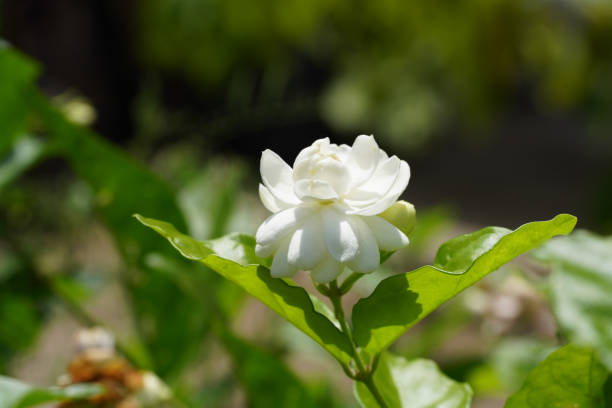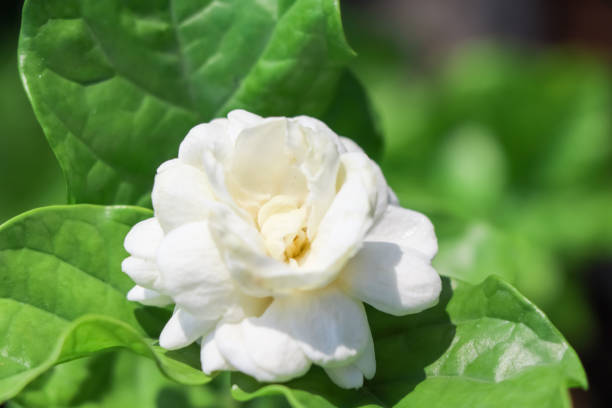Do Gardenias Bloom All Summer?
Gardenias do not bloom all summer. They may bloom for a short period in the late spring or early summer. Still, typically they are dormant until the next growing season.
They are tropical flowering plants with a unique seasonal bloom cycle. Several different varieties of Gardenia all seem to follow the same flowering cycle. Different factors affect the timing of the blooms. This article lists the most important ones to grow gardenias for longer periods.
Table of Contents
What is the Blooming Cycle of Gardenia?
Gardenias bloom in April and May, grow flowers through July and August, and then lose their leaves as autumn approaches.

Gardenia Flowers Respond to Summer Sun
Cultivars of the most widely cultivated species (Gardenia jasminoides) typically bloom in the summer. However, a few varieties begin blooming in the spring and continue blooming into the autumn.
The “Veitchii” gardenia, also known as the “everblooming” Gardenia, is an example of the latter and is the oldest variety. It is widely regarded as the most dependable bloomer. “Kimura Shikazaki,” also known as “Four Seasons,” possesses all of the characteristics of “Veitchii,” except for being slightly less fragrant.
A second flowering occurs in late summer to early fall on two corsage gardenias, “Mystery” and “August Beauty,” which bloom heavily in May and June. In early summer, “Kleim’s Hardy” produces a profusion of flowers that have a strong fragrance.
How to Encourage Gardenia Blooms
Every one of the suggestions listed above can assist you in getting the most out of your gardenias this season. However, take additional steps if you want to really encourage your gardenias to bloom bigger, bolder, and for a longer period of blooms than they are currently blooming.
First and foremost, you should avoid planting your gardenias near concrete foundations if at all possible. There are numerous examples, ranging from foundations to sidewalks, where lime leaching from concrete can cause the pH of the soil to rise, thereby impairing vegetation growth. The pH of gardenia soil should be between 5 and 6.5, if possible.
It can take three years for gardenia seeds to produce flowering plants. Therefore, if you’re looking to expand your gardenia patch as quickly as possible, you might want to consider using cuttings instead of seeds.
This will require you to ensure that the cutting in question is at least five inches in length before proceeding. After cutting the plant, you’ll want to place it in a 5.50 mixture of either perlite or sand, along with peat moss, to keep it healthy.

Maintaining Your Blossoms
Provide High Level of Humidity
Suppose your gardenias are not receiving 15 to 25 degrees of humidity during their blooming season. In that case, you’ll definitely be able to see the improvement. Ask an expert if they’re comfortable working when it’s near 100%, and then compare that with how much comfort is provided by 70%. Not only can high humidity help your Gardenia Blooms out immensely in terms of their overall health, but it will also promote faster growth.
Provide Nutrients
Potassium is a great fertilizer to use for most flowers, including gardenia blossoms. Any leafy greens you have around your house can provide the additional nutrients these blossom needs. You can do it if your soil or direct container watering isn’t providing it for them correctly. In addition, adding liquid kelp extract and amla juice into their container will also help ensure they are getting all the necessary lipids requirements during their blooming.
Prune At the Right Time
Pruning is something that should be done before the Gardenia Blooms bloom. This will avoid unnecessary growth during blooming. Some of these plants can last up to three years once flowering begins, so you must plan accordingly and prune accordingly as well when the direct sun comes into play, whether they’re in full leaf or all but gone by early summer.
Combat Bud Drop
Bud Drop is a natural part of the Gardenia bloom cycle, and usually, not much can be done about that. However, there are some tactics you want to know in store for handling bud drop, so it doesn’t affect your blooms. To keep this problem at bay or completely prevent it from happening, make sure higher humidity conditions (when possible) are provided around their receptacles during the prolonged periods they need water and supply all known nutrients.
